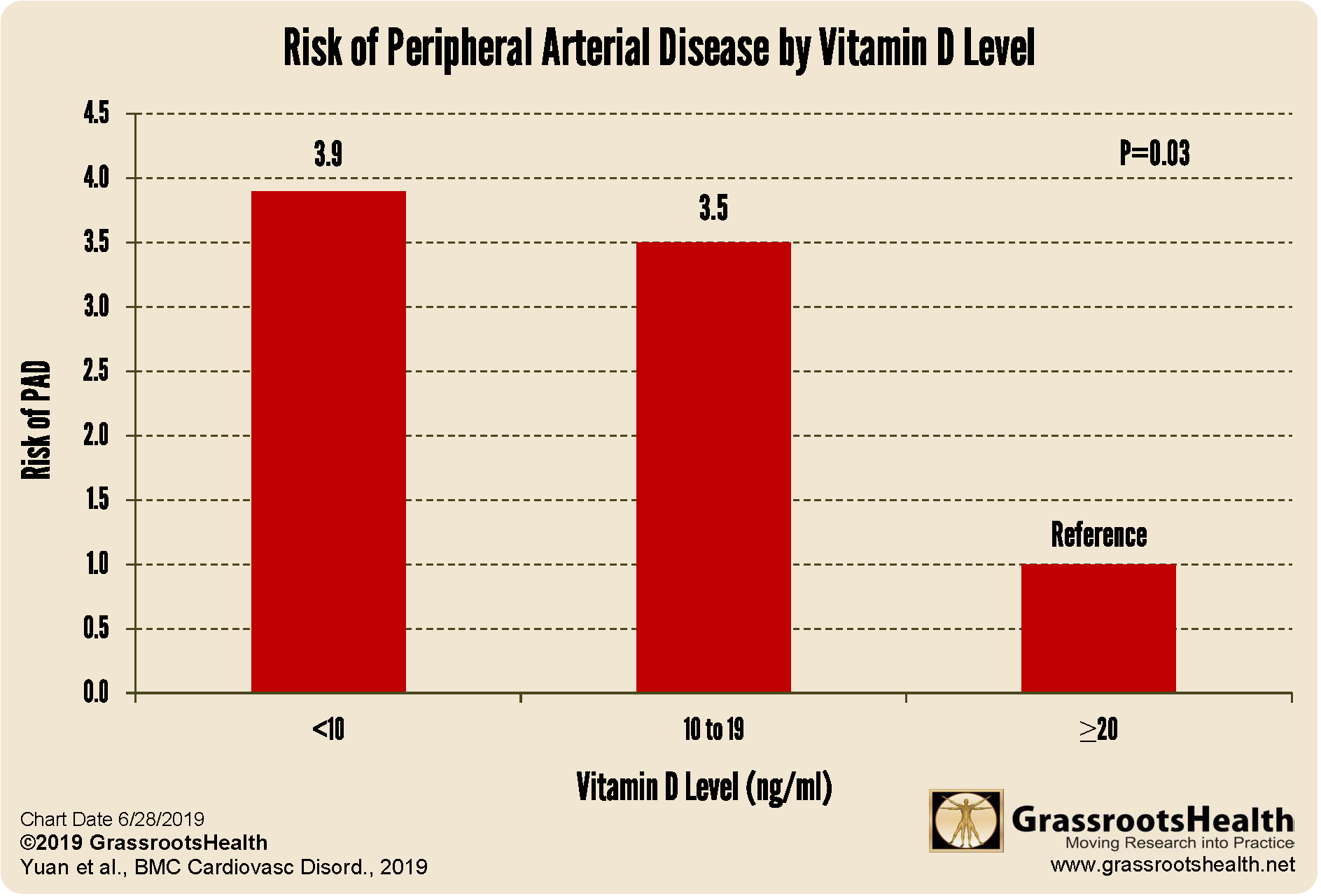Published on July 2, 2019
 Peripheral arterial disease (PAD) is a circulatory condition in which narrowed blood vessels reduce blood flow to the limbs. While many people with PAD have no or mild symptoms such as leg pain, it is associated with an increased risk of developing cardiovascular disease.
Peripheral arterial disease (PAD) is a circulatory condition in which narrowed blood vessels reduce blood flow to the limbs. While many people with PAD have no or mild symptoms such as leg pain, it is associated with an increased risk of developing cardiovascular disease.
PAD is a common complication of diabetes. Last month (June 2019), results from a study assessing the association between vitamin D and PAD among 1,018 type 2 diabetes (T2D) patients living in China were published.
What were the findings of the study?
In these T2D patients, only 20% were found to have 25(OH)D levels of at least 20 ng/ml (50 nmol/L). Patients with the lowest vitamin D levels, less than 10 ng/ml (25 nmol/L), had almost four times the risk compared to patients with levels at or above 20 ng/ml (50 nmol/L) (P=0.03).
This association was adjusted for other risk factors such as age, sex, BMI, smoking, season, coronary heart disease, hypertension, cerebral infarction, and duration of diabetes.
How do I know if my vitamin D levels are supportive of good health?
Make sure you and your loved ones know your vitamin D level and are taking daily steps to keep it at a level of 40-60 ng/ml (100-150 nmol/L). Find out your levels today! Log on to the shop (click the link below) to get your tests and see for yourself if your levels can be improved.
Make sure you track your results before and after, about every 6 months!
How can I track my vitamin D intake and nutrient levels?
To help you track your nutrient intake and nutrient levels, GrassrootsHealth has created an online tracking system called myData-myAnswers. You can track any of your supplemental and dietary nutrient intakes to see how they impact your levels and overall health. Check it out today!






